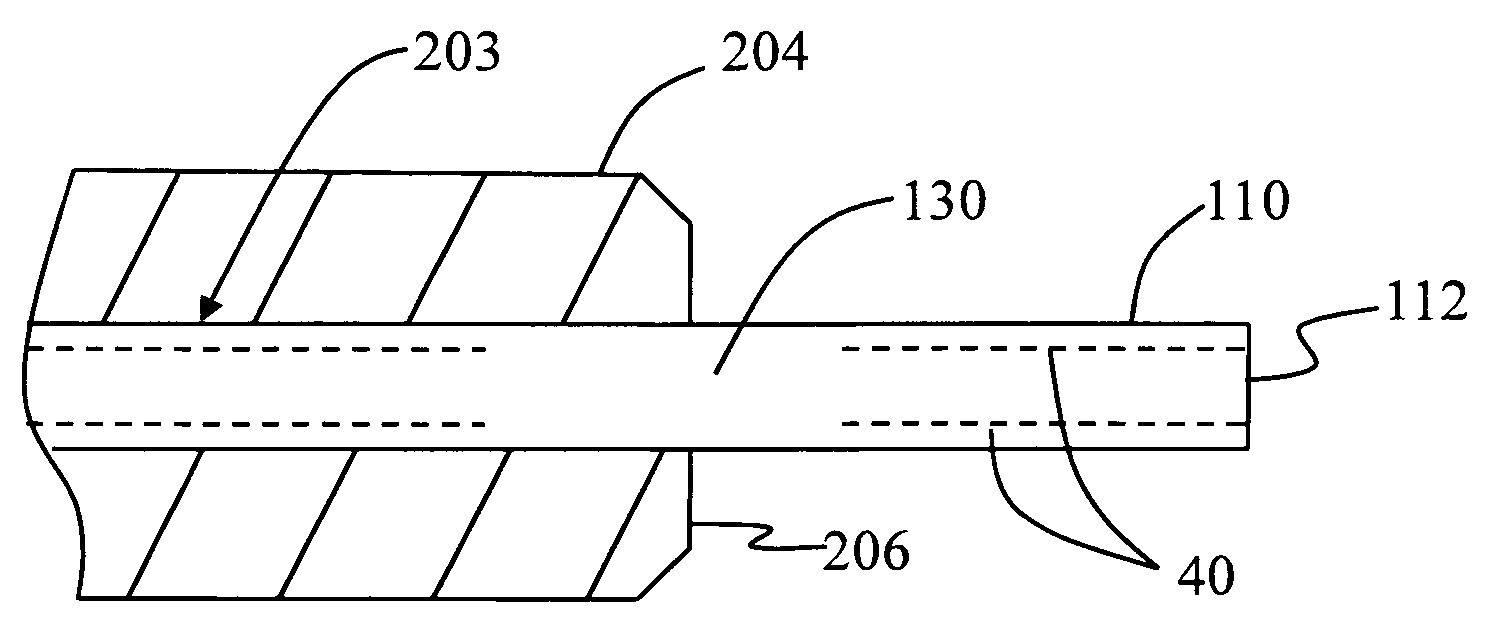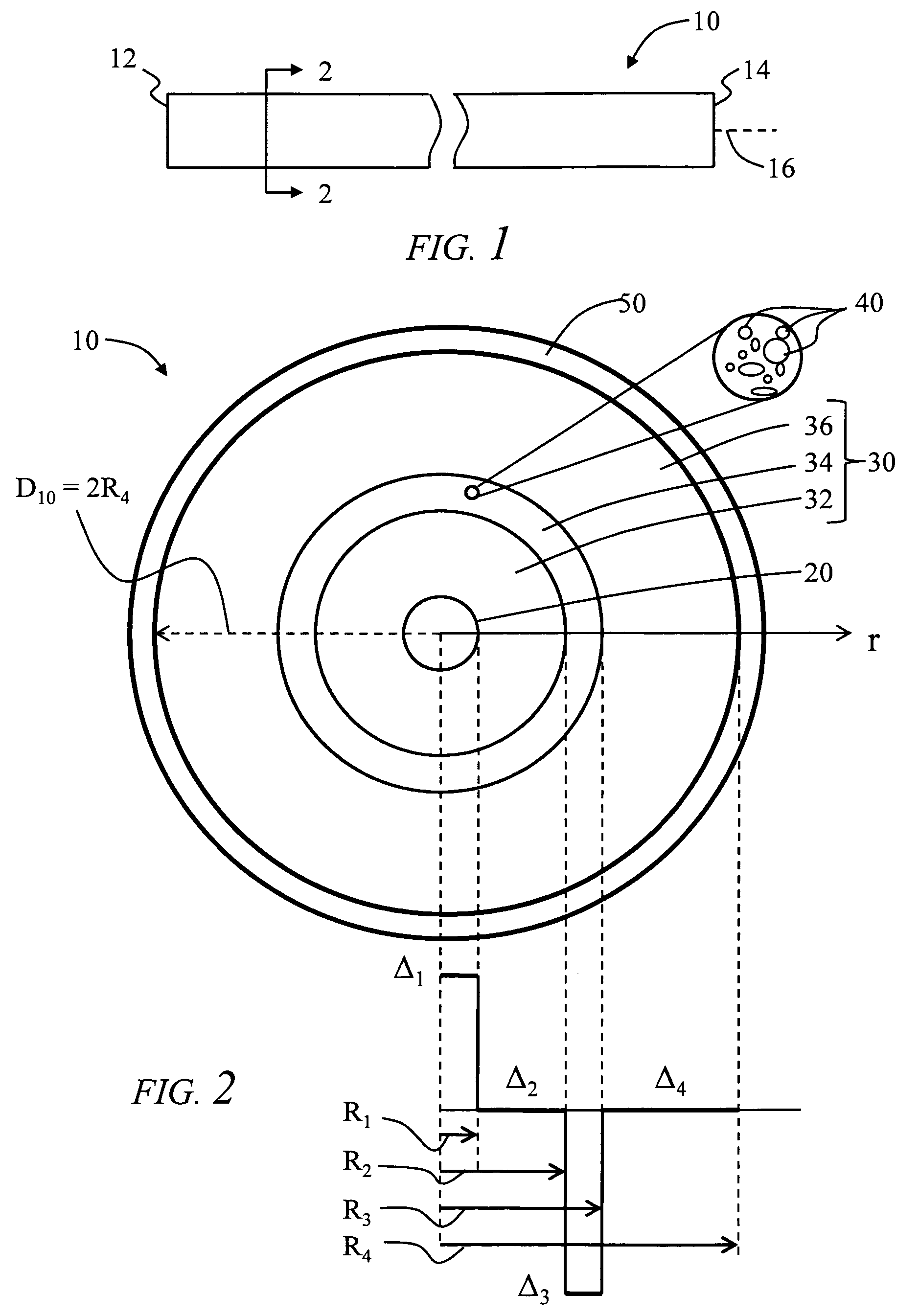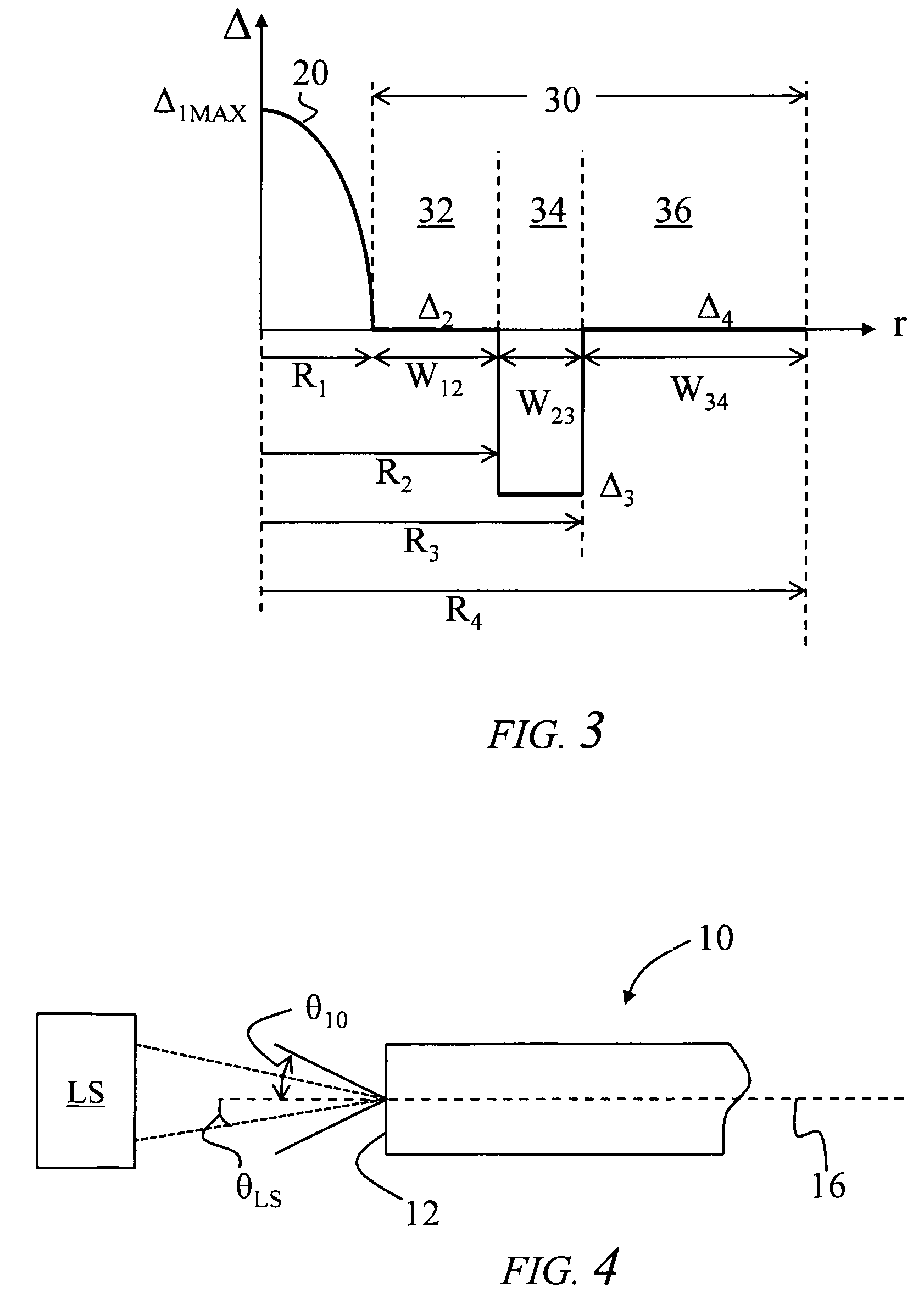Connectorized nano-engineered optical fibers and methods of forming same
a nano-engineered, optical fiber technology, applied in the direction of cladding optical fibers, manufacturing tools, instruments, etc., can solve the problems of macrobending losses, time-consuming connectorization process, and high cost of highly trained technicians, and achieve the effect of preventing or eliminating contamination
- Summary
- Abstract
- Description
- Claims
- Application Information
AI Technical Summary
Benefits of technology
Problems solved by technology
Method used
Image
Examples
Embodiment Construction
[0038]Reference is now made to preferred embodiments of the invention, examples of which are illustrated in the accompanying drawings. Whenever possible, the same reference numbers and symbols are used throughout the drawings to refer to the same or like parts.
Definitions and Terminology
[0039]In the description below, the “refractive index profile” is the relationship between refractive index or relative refractive index and waveguide fiber radius. The “relative refractive index percent” is defined as Δi(%)=[(ni2−nc2) / 2ni2]×100, where ni is the maximum refractive index in region i, unless otherwise specified, and nc is the average refractive index of the cladding region, as discussed below. In an example embodiment, nc is taken as the refractive index of an inner annular cladding region 32, as discussed below.
[0040]As used herein, the relative refractive index percent is represented by Δ(%) or just “Δ” for short, and its values are given in units of “%”, unless otherwise specified o...
PUM
| Property | Measurement | Unit |
|---|---|---|
| cross-sectional diameter | aaaaa | aaaaa |
| airline size | aaaaa | aaaaa |
| current | aaaaa | aaaaa |
Abstract
Description
Claims
Application Information
 Login to View More
Login to View More - R&D
- Intellectual Property
- Life Sciences
- Materials
- Tech Scout
- Unparalleled Data Quality
- Higher Quality Content
- 60% Fewer Hallucinations
Browse by: Latest US Patents, China's latest patents, Technical Efficacy Thesaurus, Application Domain, Technology Topic, Popular Technical Reports.
© 2025 PatSnap. All rights reserved.Legal|Privacy policy|Modern Slavery Act Transparency Statement|Sitemap|About US| Contact US: help@patsnap.com



